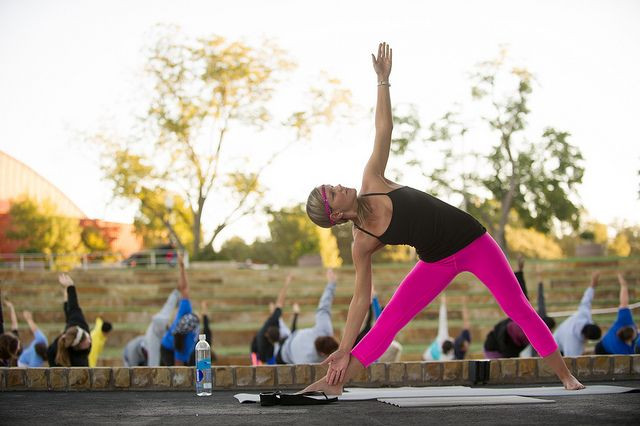Yoga Benefits Include A 20% Improvement In Pain And Mood For Arthritis Sufferers

Affecting one in five adults, arthritis mainly hurts — it causes tenderness, stiffness, and pain. A new Johns Hopkins study finds people with arthritis who practiced yoga for just eight weeks had a 20 percent improvement in health, pain, energy, and mood.
“The big message is that all people with arthritis need to be physically active, yet individuals with arthritis are less active than their peers,” Dr. Susan J. Bartlett, Ph.D., an adjunct associate professor of medicine at Johns Hopkins and associate professor at McGill University, told Medical Daily. As lead investigator of the study, Bartlett added the results suggest that “yoga is a safe and feasible option for people with arthritis,” an option offering “both mental and physical benefits.”
Rheumatoid Arthritis and Osteoarthritis
Participants in the study suffered from knee osteoarthritis and rheumatoid arthritis, two of the most common forms of arthritis. Rheumatoid arthritis is a form of inflammatory arthritis, a key symptom of which is swelling of the lining of the joints, as described in the clinical trial. A chronic disease, inflammatory arthritis can cause long-term joint damage, resulting in loss of function and chronic pain, both resulting in potential disability. Osteoarthritis, according to Bartlett, is the most common form of arthritis by far, affecting both men and women equally. Knee osteoarthritis, where the cartilage in this joint gradually wears away causing bone to scrape against bone, is degenerative.
The objective of the study, conceived by Bartlett, was to learn how people with rheumatoid arthritis and knee osteoarthritis responded to a program of yoga, a set of ancient Indian theories and practices, which includes poses, breathing techniques, and relaxation exercises. The study included 75 sedentary adults who suffered from either rheumatoid arthritis or knee osteoarthritis. All the study participants were over the age of 18 and most, 95 percent, were women. Why the male-female imbalance?
“Rheumatoid arthritis disproportionately affects women,” said Bartlett, noting 70 percent of people with this condition are women. Additionally, “women are much more likely to express interest and participate in all clinical trials that involve lifestyle changes (e.g., physical activity),” she said.
After Bartlett and her co-researchers randomly separated participants into two groups, they assigned one group to eight weeks of yoga (two 60-minute classes and one home practice/week) while offering the other group academic classes about arthritis.
At the eight week mark, the researchers compared the two groups. Those doing yoga reported a 20 percent improvement in pain, energy level, mood, and physical function, including the ability to complete physical tasks. Little difference between the groups existed when partipants were tested for balance and upper body strength, but walking speed improved slightly for the yoga group. Most important, the yoga participants continued to exercise for a longer period than occurs following many clinical trials, where commonly half of the participants stop exercising within just three months, Bartlett explained.
“Anecdotally, several people told us years later this was life changing for them — it gave them a much more positive view of their bodies (and what they were able to accomplish physically), their illness, and their ability to impact their overall health,” said Bartlett, who added, “One person went on to become a marathon runner!"
Source: Moonaz SH, Bingham CO, Wissow L, Bartlett SJ. Yoga in Sedentary Adults with Arthritis: Effects of a Randomized Controlled Pragmatic Trial. Journal of Rheumatology. 2015.



























